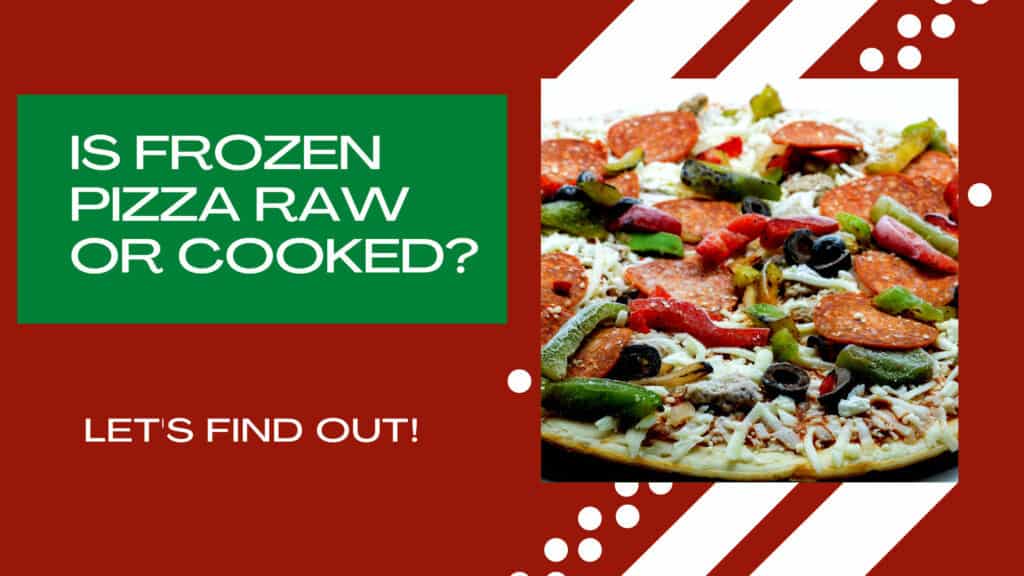If you are a fan of frozen pizza, you might be wondering whether these convenient meals are pre-cooked or require further cooking before consumption.
The answer is not as straightforward as it may seem, as different brands and types of frozen pizzas can vary in their preparation methods.
In this article, we will explore the question, “Are frozen pizzas precooked?” and provide you with all the information you need to know about handling, cooking, and consuming frozen pizzas safely and deliciously.
We will discuss the benefits of precooking ingredients like dough and toppings, the risks of eating uncooked or undercooked frozen pizza, and provide practical tips on how to ensure your pizza is fully cooked and enjoyable.
So, if you want to learn more about frozen pizza and how to make the most out of this convenient meal, read on!
Let’s get started!
Here’s What You Will Find:
Key Takeaways
Are Frozen Pizzas Precooked?
Frozen pizzas are typically par-cooked, meaning the dough and some toppings are partially cooked before freezing, but they still require further cooking before consumption.
Eating uncooked or undercooked frozen pizza can pose health risks, such as foodborne illness, and result in an unsatisfactory taste and texture.
It is crucial to follow the cooking instructions provided on the frozen pizza packaging to ensure that the pizza and all its toppings are cooked thoroughly and safe to consume.
Precooking ingredients like dough and toppings help preserve their quality, taste, and texture, while also maintaining food safety during storage and transportation of frozen pizzas.
Are Frozen Pizzas Precooked?
Yes, the majority of frozen pizzas are typically parbaked before they are frozen.
Parbaking is a cooking process where the dough is partially baked, so it’s not completely raw but also not fully cooked. This allows the pizza to maintain its shape, flavor, and texture during freezing and reheating.
However, it’s always important to fully cook a frozen pizza according to the instructions on the packaging to ensure food safety and the best taste. It’s also worth noting that individual brands and products may vary, so it’s always a good idea to read the packaging for any specific cooking instructions or precautions.
When you go to the supermarket freezer section and see all the frozen pizzas, and wonder: are frozen pizzas precooked?
Let’s say that there could be toppings that might last longer if they’ve gone through a quick steaming or have preservatives added.

The truth is that all frozen pizzas have ingredients that are essentially uncooked before you bake them.
There’s an excellent reason that frozen pizza brands do this.
These pizzas are frozen to help preserve the dough, pizza sauce, cheese, and toppings until you put them in the oven.
This way, a pizza tastes as fresh as it can when it’s baked in an oven for the correct amount of time.
While some companies might add preservatives to some frozen pizzas brands, many of the ingredients are primarily uncooked. It’s also why you need to cook a pizza to reduce the threat of bacteria found in certain meats.
If you want to learn how to best keep frozen pizzas in the freezer check our post on frozen pizzas.
Pro Tip
A nice way to step up your frozen pizza is by drizzling olive oil when is done and some garnishes. Parsley will give it some color while truffle salt will take it to the next level.
Frozen Pizza Ingredients
Frozen pizza ingredients typically include a variety of components such as dough, sauce, cheese, and toppings like vegetables, meats, and seasonings. These ingredients are carefully selected and processed to maintain their quality, taste, and texture during freezing and cooking.
While the dough is usually par-cooked, meaning it is partially baked before freezing, most toppings are also pre-cooked or processed to some extent. Meats like pepperoni, sausage, or ham are typically pre-cooked to ensure food safety and to lock in their flavors, while vegetables are often blanched or slightly cooked to preserve their color and texture.
Cheese is generally not pre-cooked, as it is meant to melt and brown during the final cooking process. It is essential to follow the cooking instructions provided on the frozen pizza packaging to ensure that all ingredients are cooked thoroughly and the pizza is safe to consume.
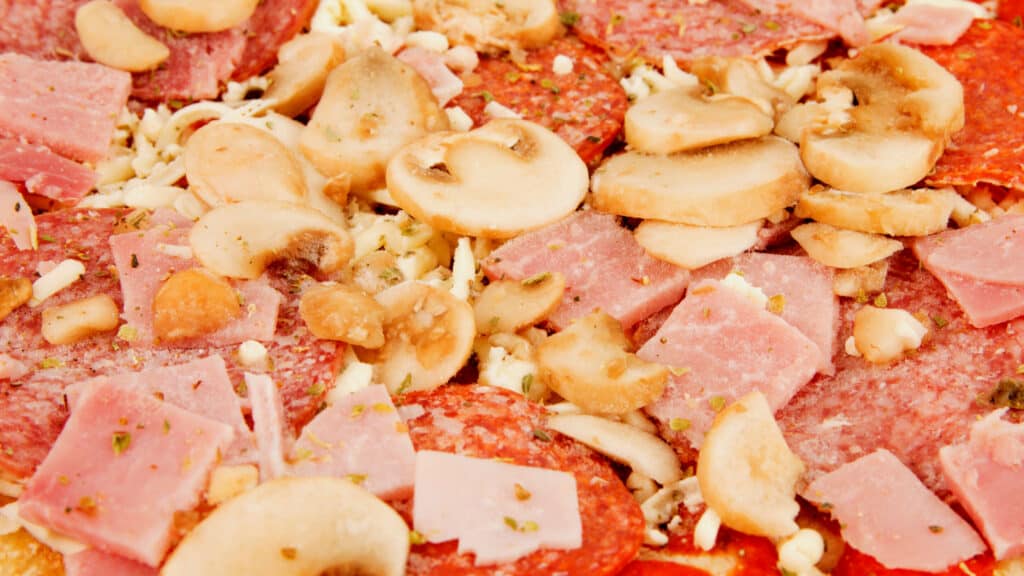
Cured vs. Cooking Pizza Toppings
Cured and cooked pizza toppings offer different flavors, textures, and preparation methods, each contributing to the overall taste and experience of the pizza. Cured toppings, such as pepperoni, salami, and prosciutto, undergo a preservation process involving salt, nitrates, or other curing agents, as well as air-drying or fermentation.
This method enhances the flavors, imparts a unique texture, and extends the shelf life of the meats. These cured toppings are often used on pizzas without further cooking, as the curing process has already made them safe to eat. On the other hand, cooked pizza toppings, like sausage, ground beef, and chicken, require preparation through methods such as grilling, sautéing, or baking before being added to the pizza.
These toppings offer distinct flavors and textures, while also ensuring food safety by cooking the meat to the proper internal temperature. Both cured and cooked pizza toppings provide a diverse range of taste experiences and can be combined or used individually to create a delicious and satisfying pizza.
So you better understand, that curing meat involves adding salt for both preservation, color, and taste. This process reduces the risk of bacteria. Cooking meat entails bringing it to a temperature where it is safe to consume.
Yet, for the sake of weeding out the threat of salmonella or bacteria, and if you are unsure if frozen pizzas are uncooked, here is our recommendation, frozen pizzas should always be fully cooked.
Pre-cooked Pizza Crust
Precooked pizza crusts, often referred to as par-baked crusts, are partially baked crusts that require further cooking before consumption. These crusts are a great option for homemade pizzas, as they save time and effort while providing a delicious and convenient base for adding toppings.
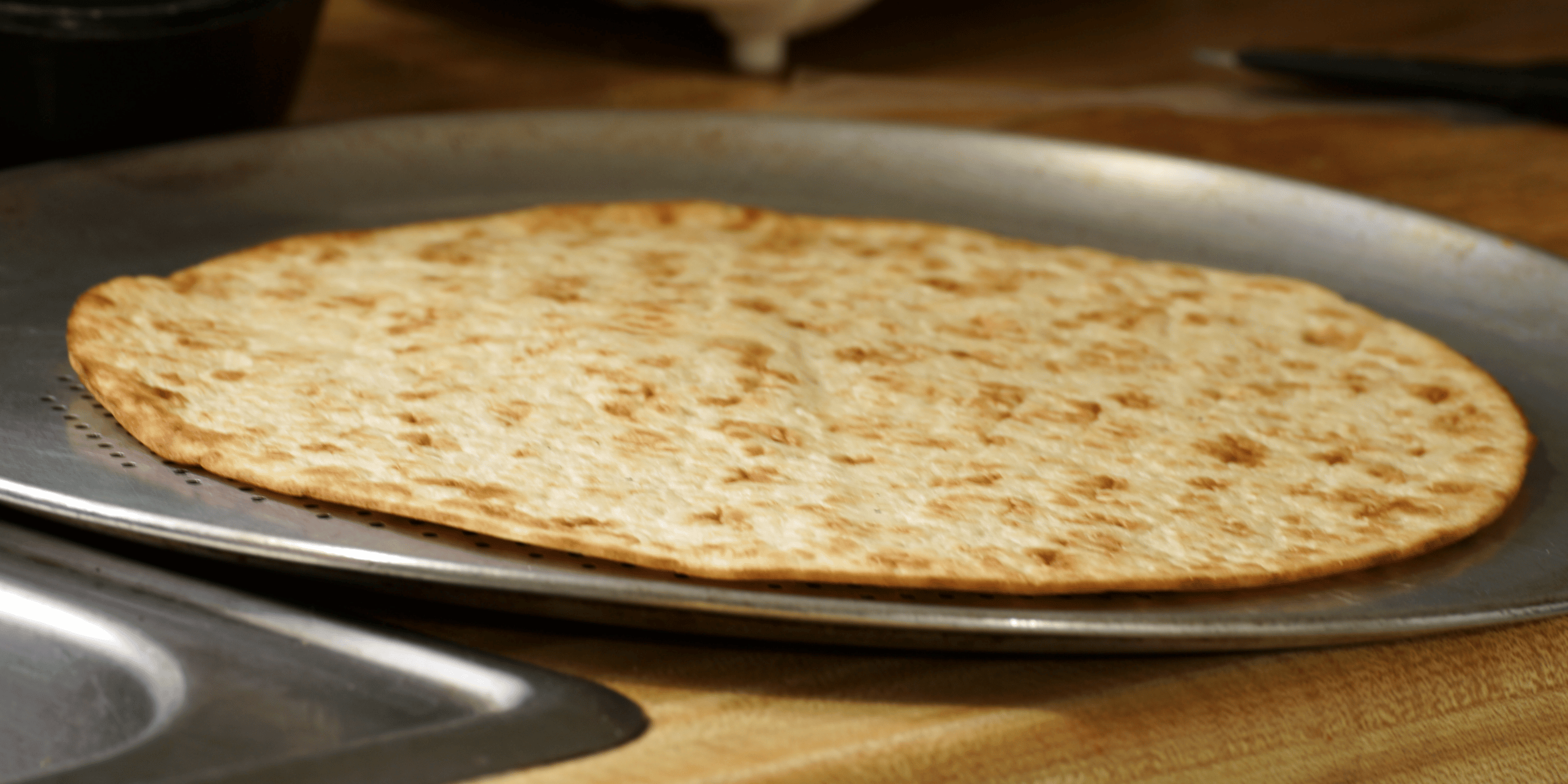
To handle precooked pizza crusts, it is essential to keep them frozen until you are ready to use them. Allow the crust to thaw at room temperature for 10-15 minutes before adding sauce and toppings. To cook a precooked crust, preheat the oven to the temperature recommended on the packaging and bake the crust for about 5-10 minutes before adding toppings.
Once the pizza is fully assembled, bake it for another 10-15 minutes, or until the crust is golden brown and the cheese is melted. It is not safe to eat precooked pizza crusts raw, as they have not been fully cooked and may contain harmful bacteria that can cause foodborne illness.
Therefore, always ensure that your pizza is fully cooked before consuming it to ensure safety and optimal taste.
How to Cook a Frozen Pizza
Now that you have the answer to “Are frozen pizzas pre-cooked?”, let’s dive into how to cook a frozen pizza.
Most of us think it’s perfectly fine to preheat your oven and plop a frozen pizza onto a cookie sheet to cook for 15-20 minutes.
But is that the best way to cook a frozen pizza? Here’s what we recommend to get the best overall cooking time and crispness.
If you’ve ever heard of a baking stone, it’s commonly used for cooking pizzas. It’s often made from ceramic, stone, and recently synthetic polymers.
Pizza Stone
These baking stones are great at heating the crust base while allowing the toppings to get cooked evenly.
This is why a baking stone needs to be preheated before you put in your pizza. There is also the issue if you need to defrost a frozen pizza before cooking it.
The answer to this is yes, preferably, it would be best if you let the frozen pizza thaw before you bake it. That way you make sure it cooks evenly and all the toppings are cooked properly.
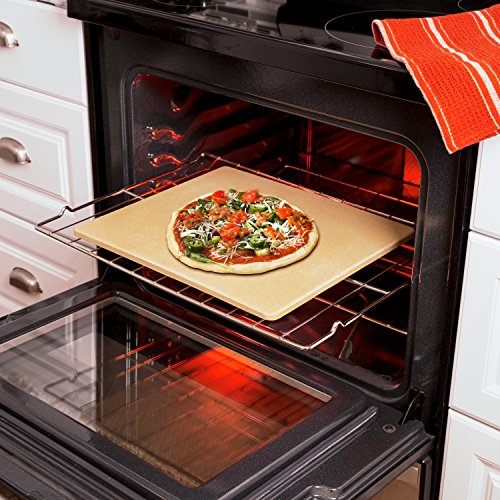
Game night, movie night, or just a night by yourself with your favorite red wine, pizza just fits the occasion. Whether you're throwing in a frozen pizza or rolling your own dough - cooking in the oven or on the grill - this pizza stone will give you the crust you were looking for.
However, if you are lacking time, and your baking stone is nice and hot, all the moisture will burn off. You may also add a generous dusting of semolina or cornmeal flour.
Parchment Paper
Alternatively, you can cut out a round piece of parchment baking paper that’s cut to the size of your pizza. These will help your pizza slide onto the baking stone a lot easier.
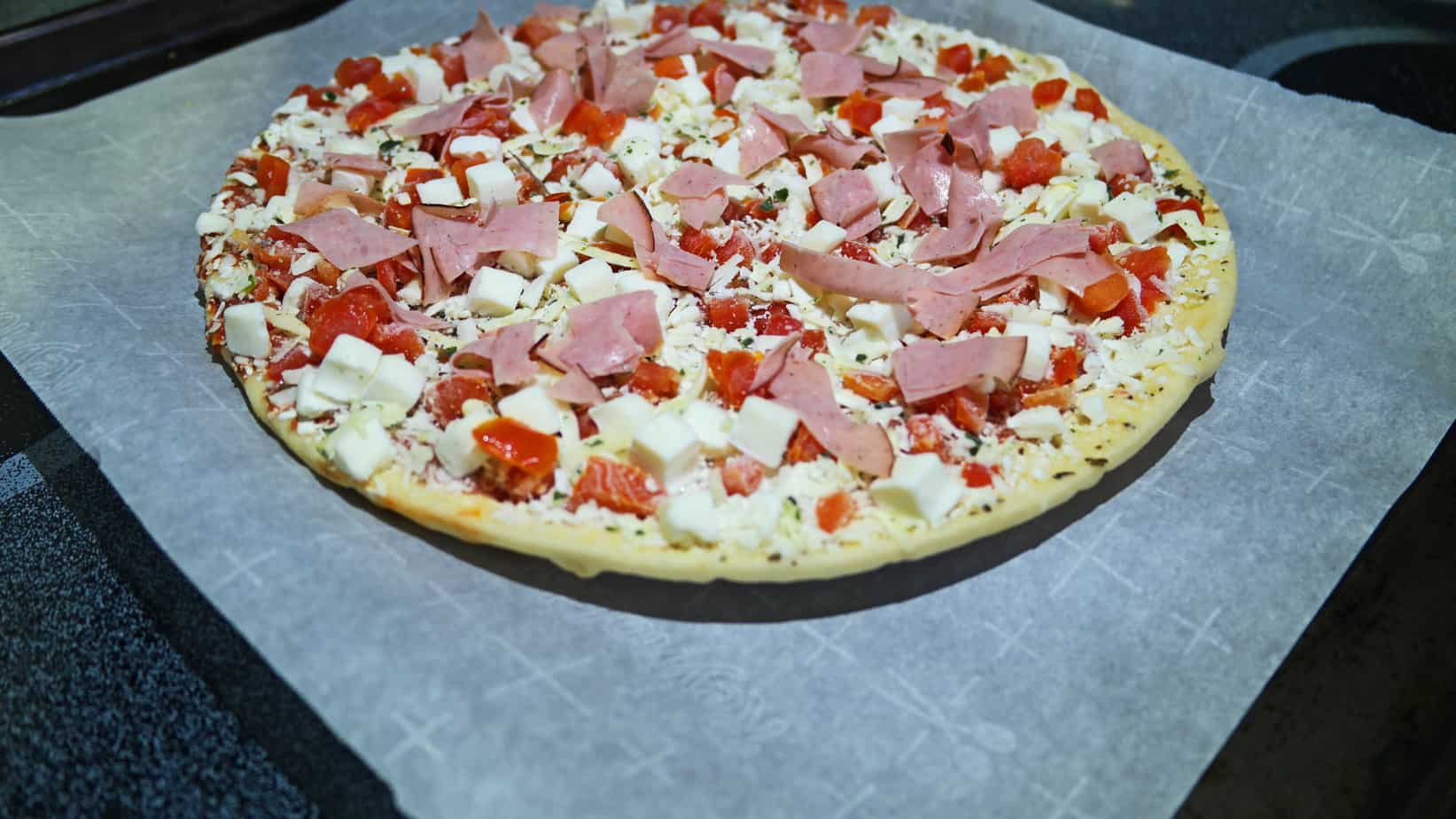
After the pizza is cooked, you can use a flat spatula to re-slide the pizza onto an upturned cookie tray.
Never take your baking stone out of the oven since the difference in heat can cause cracking. The ideal temperature is critical too.
Home Oven
Depending on your oven, it’s best to preheat it to 500- 550 Fahrenheit to heat up your baking stone.
Pre-Heat Oven
Preheating should be for 30 to 45 minutes on the lowest rack setting.
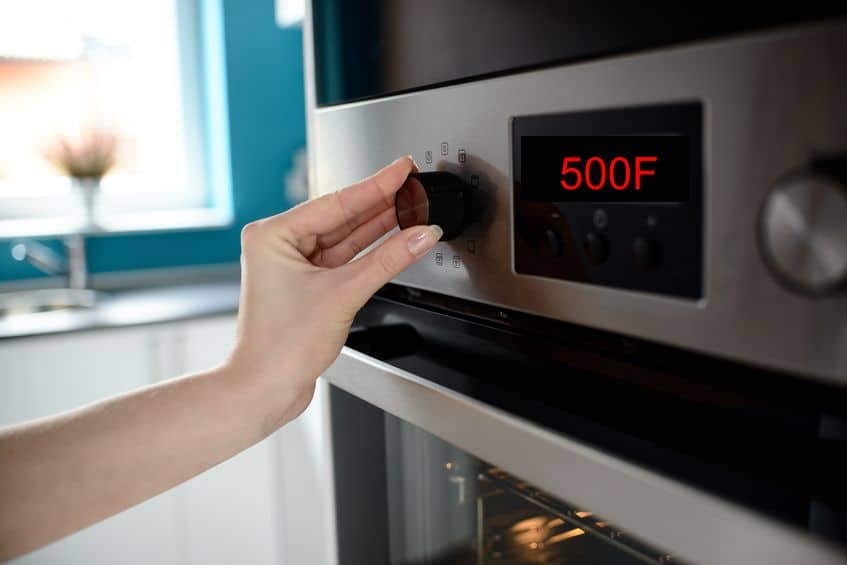
Pizza Pun
What did the kid say after eating a frozen pizza?
Well, that wasn’t very thawed out.
What If You Don’t Have an Oven that Reaches 500F?
Most home ovens will reach at least 400 degrees Fahrenheit or higher, but if yours doesn’t, you can still get good results.
Let your oven reach the highest temperature for 30 minutes before adding your pizza.
For the best results, you should put a frozen pizza on an upturned cookie sheet. Your pizza needs to be frozen for the best results. If you want, you should add parchment paper underneath, so it absorbs any moisture.
If you don’t add parchment paper, this is fine, but you won’t get as crispy crust as a result.
Instead, you might choose to add semolina flour or some cornmeal flour. With lower temperatures, it does take longer for your pizza to cook. Most of the time, it will take up to 15-20 minutes at 400F to become golden brown.
Undercooked pizza is also limp and floppy when you eat it.
Even if you have a self-rising dough, you need to allow this dough to rise and cook all the way through. This process can make a pizza taste too bready and overly chewy.
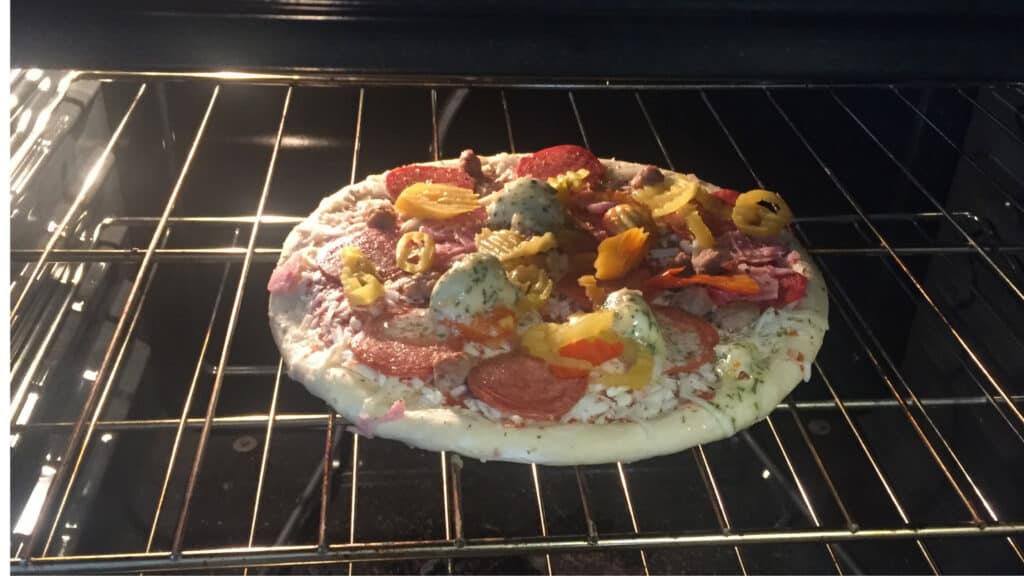
So are you ready to bake your perfectly cooked pizza? Have you tried using a pizza stone or a pizza steel?
Here’s What the PROs at Homemade PIzza Pro Use and Recommend
The Original Baking Steel is your secret weapon for recreating pizzeria-quality pizzas right in your home kitchen. Crafted from ultra-conductive steel, this game-changing tool captures and radiates heat with remarkable efficiency, ensuring a perfectly crisp, evenly baked crust every time.
It's not just for pizzas; use it for baking breads, roasting veggies, or even searing meats to culinary perfection. Durable, versatile, and easy to use, the Baking Steel is a true champion of home cooking that will elevate your baking game to professional heights.
Say goodbye to soggy, undercooked crusts and hello to the tantalizing taste of impeccably baked goods with The Original Baking Steel!
Related Questions
What Happens if You Eat Frozen Pizza that is Not Fully Cooked?
Eating frozen pizza that is not fully cooked can pose potential health risks, as well as result in an unsatisfactory taste and texture. The following issues may arise:
Foodborne illness:
Consuming undercooked pizza, particularly if it contains meats or other perishable ingredients, can increase the risk of foodborne illness caused by bacteria such as Salmonella or E. coli. These bacteria can cause symptoms like nausea, vomiting, diarrhea, abdominal cramps, and fever.
Raw dough:
Eating undercooked or raw dough can also lead to foodborne illness, as raw flour may contain harmful bacteria, and raw eggs (if used) can be a source of Salmonella. Additionally, consuming raw dough can result in an unpleasant, doughy texture and taste.
Poor texture and taste:
An undercooked frozen pizza may have a soggy or doughy crust, unmelted cheese, and improperly cooked toppings. This can lead to a disappointing eating experience and may not provide the desired flavors and textures associated with a well-cooked pizza.
To avoid these risks, it is essential to cook your frozen pizza according to the manufacturer’s instructions, which typically provide the recommended cooking time and temperature. Ensuring that your pizza is fully cooked not only guarantees a safer eating experience but also delivers the best taste and texture possible.
Is Sausage on Frozen Pizza Precooked?
Sausage on frozen pizzas is typically precooked before being added as a topping. The precooking process helps ensure food safety, as it reduces the risk of bacterial growth and contamination. It also helps maintain the flavor, texture, and overall quality of the sausage when it is reheated along with the pizza.
However, it is important to note that cooking practices may vary among different brands and types of frozen pizzas, so it is always essential to follow the cooking instructions provided on the packaging to ensure the pizza and all its toppings are cooked thoroughly and safe to consume.
Can You Eat Frozen Pizza?
Eating frozen pizza without cooking it is not recommended, as it can pose potential health risks and result in an unsatisfactory taste and texture. Frozen pizzas are typically par-cooked, meaning the dough and some toppings are partially cooked, but not enough to be considered safe or enjoyable to eat without further cooking.
You should not eat frozen pizza that is not fully baked, as it can make you sick. Frozen pizza contains uncooked flour which may contain germs that can cause food poisoning.
How Long to Cook Frozen Pizza?
Frozen pizza should be cooked from 12 to 15 minutes at 400 to 425 degrees Fahrenheit.
How to Cook Frozen Pizza
For more information on how to properly cook a frozen pizza, check our Guide to Oven Time and Temperature for Pizza.
The Last Slice
When you learn how to cook frozen pizza at home, it will be easier to follow these tips.
Trust our approach to making a frozen pizza; not only taste better, but your properly cooked pizza will also turn out better too.
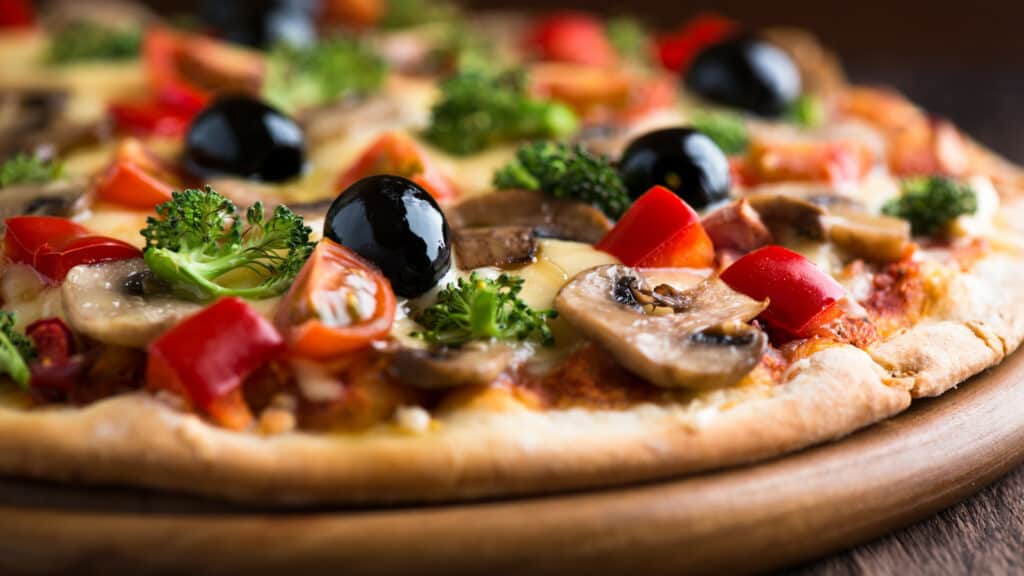
With a little bit of experimenting, you can get different crispiness levels from other frozen pizza brands. We hope this short guide will help inspire you to cook frozen pizza that will always turn out great.
We hope we answered your question are frozen pizzas precooked? and hopefully, you learned how to bake the best-frozen pizzas.
Check our Learn section, we have plenty of additional resources for you and would like it if you try making your own homemade pizza.
Are you up for it? Let us know if we would like to help you get started.
Additional Resources on Frozen Pizza

How to Cook Frozen Pizza in Air Fryer
the PROs
How to Cook Frozen Pizza in Air Fryer Are you looking up how to cook frozen pizza in an air …
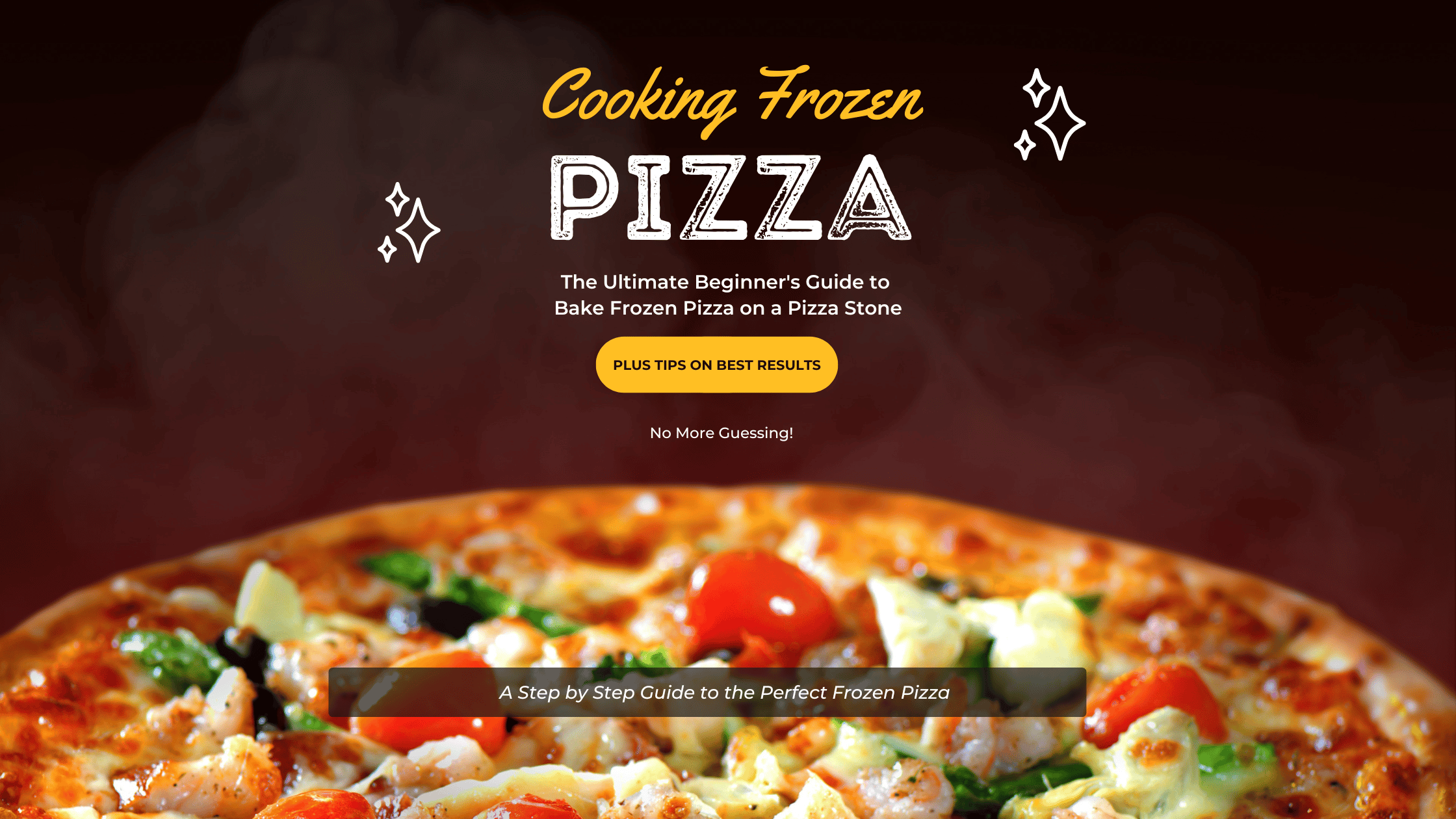
Cooking Frozen Pizza on a Pizza Stone: How to Achieve a Crispy Crust Every Time
the PROs
If you’re looking to elevate your frozen pizza game and achieve that perfect crispy crust, then cooking frozen pizza on …
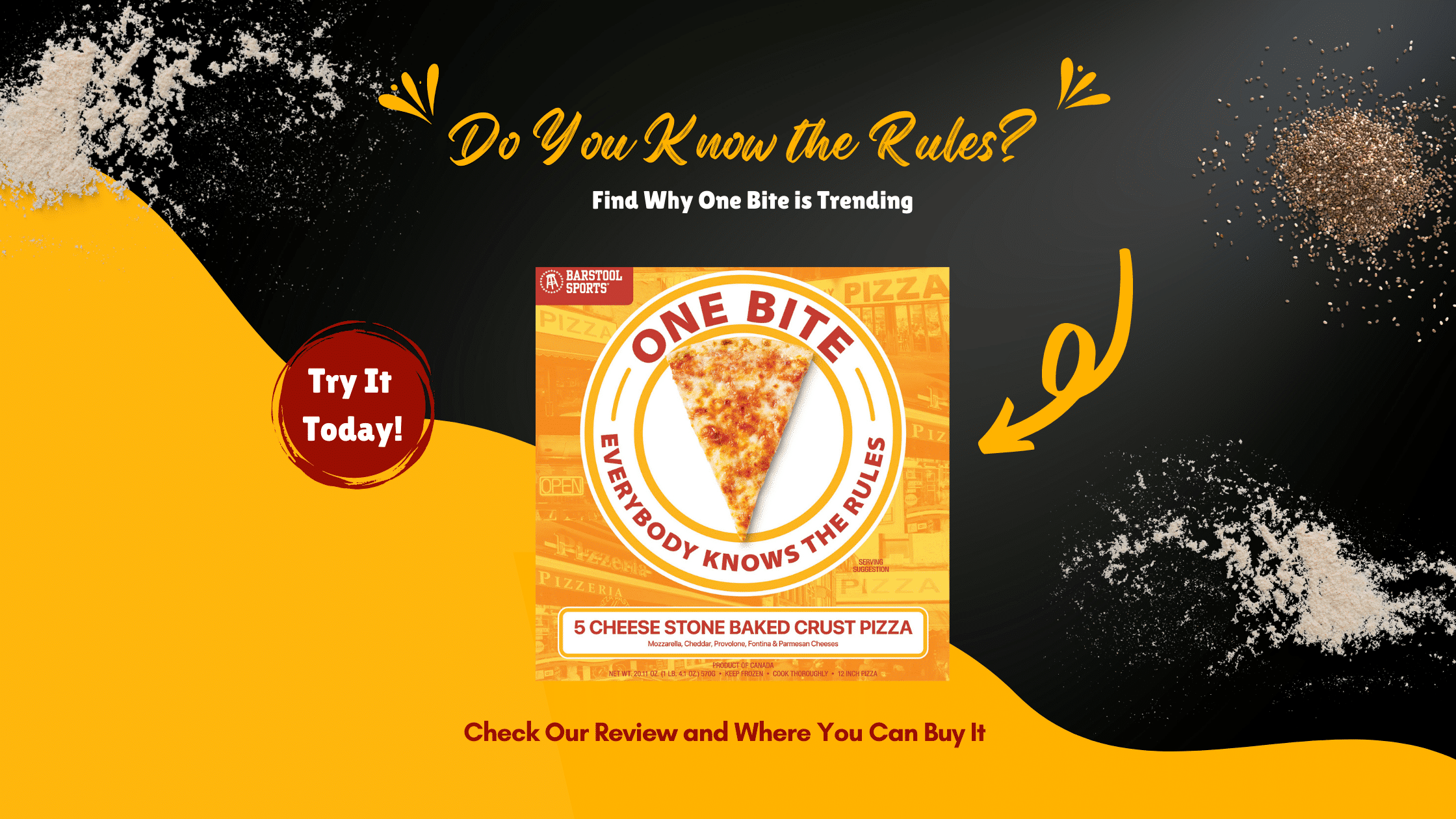
One Bite Frozen Pizza: Find Everything You Need to Know
the PROs
One Bite Frozen Pizza – Do You Know the Rules? At least once in our life, we have looked over …
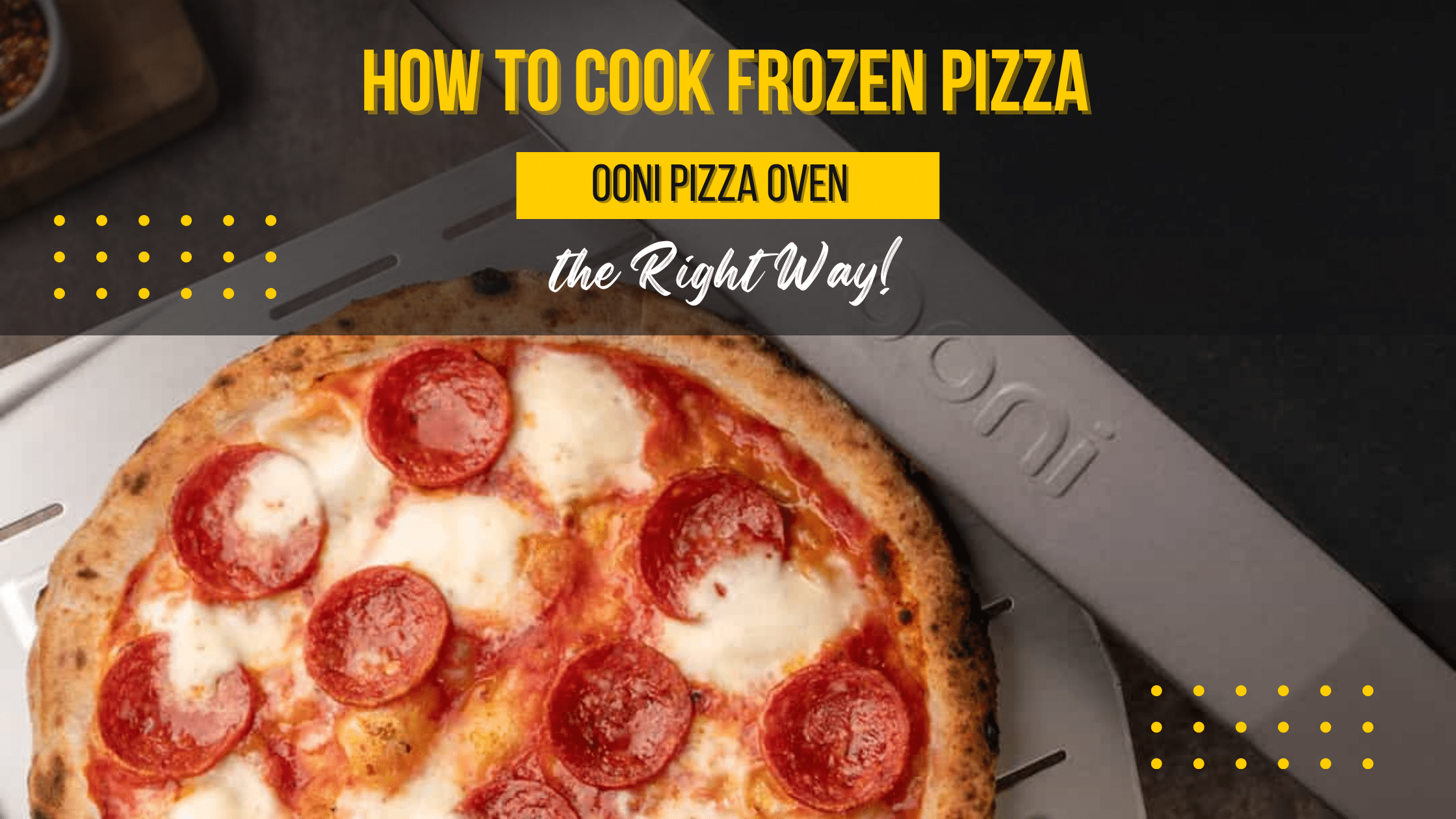
How to Cook Frozen Pizza in Ooni Pizza Oven (Step by Step)
the PROs
How to Cook Frozen Pizza in Ooni Pizza Oven After a tiring day at school or work, we all want …
Enjoy!
Not a PRO? Not a Problem!
Take a pizza class to bring your pizza skills to the next level,
so you can be a PRO!
Related Posts

Costco Pizza Delivery: Find How You Can Get It Now!
the PROs
People go to Costco’s food court for many different reasons, but the cheesy slice of pizza they serve is among …

Pizza for Beginners: Don’t Buy Pizza, Make It! Here’s How to Get Started!
the PROs
You have this idea that you want to make pizza at home as opposed to ordering it, but where do you start? Don’t worry! Here you will find answers and directions to all your questions.

Pizza Toppings Under Cheese or Over Cheese? [Why the Order Matters]
the PROs
Is Pizza Cheese on Top or Bottom? Hey pizza lovers, are you wondering if you should layer pizza toppings under …
Newsletter
Subscribe to our Recipe of the Week newsletter and receive our partners’ latest recipes, tips, and discount offers.
Keep in Touch!
